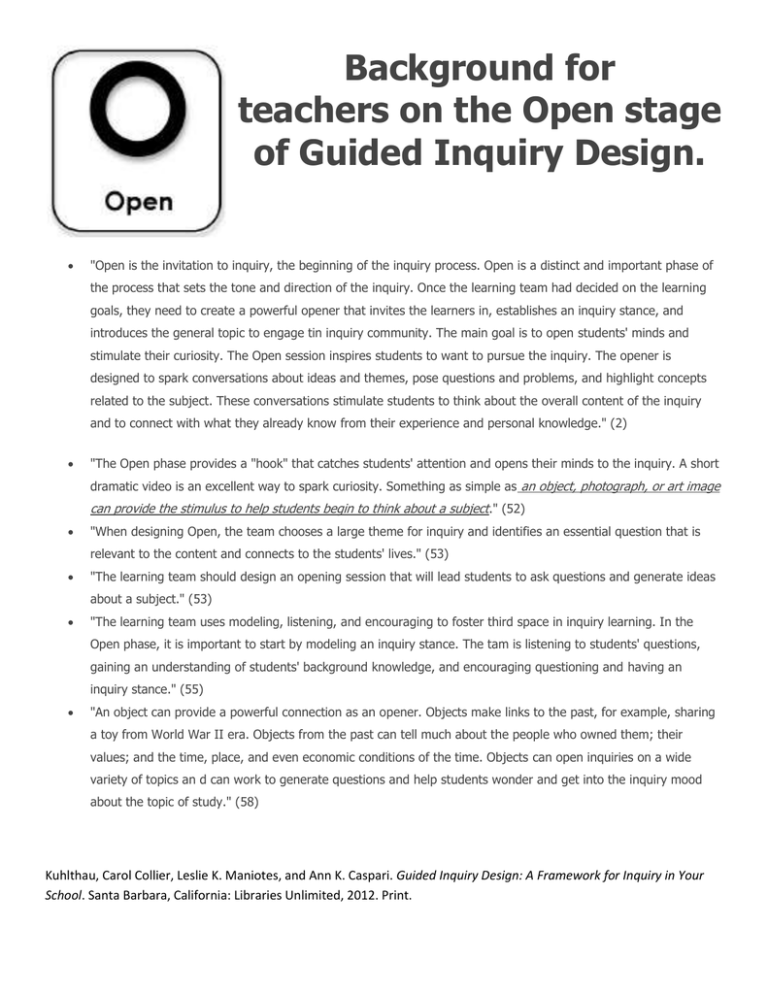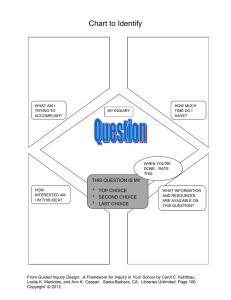Background for teachers on the Open stage of Guided Inquiry Design.
advertisement

Background for teachers on the Open stage of Guided Inquiry Design. "Open is the invitation to inquiry, the beginning of the inquiry process. Open is a distinct and important phase of the process that sets the tone and direction of the inquiry. Once the learning team had decided on the learning goals, they need to create a powerful opener that invites the learners in, establishes an inquiry stance, and introduces the general topic to engage tin inquiry community. The main goal is to open students' minds and stimulate their curiosity. The Open session inspires students to want to pursue the inquiry. The opener is designed to spark conversations about ideas and themes, pose questions and problems, and highlight concepts related to the subject. These conversations stimulate students to think about the overall content of the inquiry and to connect with what they already know from their experience and personal knowledge." (2) "The Open phase provides a "hook" that catches students' attention and opens their minds to the inquiry. A short dramatic video is an excellent way to spark curiosity. Something as simple as an object, photograph, or art image can provide the stimulus to help students begin to think about a subject ." (52) "When designing Open, the team chooses a large theme for inquiry and identifies an essential question that is relevant to the content and connects to the students' lives." (53) "The learning team should design an opening session that will lead students to ask questions and generate ideas about a subject." (53) "The learning team uses modeling, listening, and encouraging to foster third space in inquiry learning. In the Open phase, it is important to start by modeling an inquiry stance. The tam is listening to students' questions, gaining an understanding of students' background knowledge, and encouraging questioning and having an inquiry stance." (55) "An object can provide a powerful connection as an opener. Objects make links to the past, for example, sharing a toy from World War II era. Objects from the past can tell much about the people who owned them; their values; and the time, place, and even economic conditions of the time. Objects can open inquiries on a wide variety of topics an d can work to generate questions and help students wonder and get into the inquiry mood about the topic of study." (58) Kuhlthau, Carol Collier, Leslie K. Maniotes, and Ann K. Caspari. Guided Inquiry Design: A Framework for Inquiry in Your School. Santa Barbara, California: Libraries Unlimited, 2012. Print.

